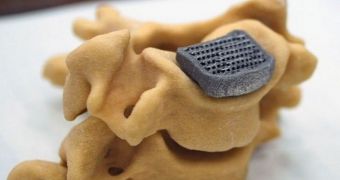You'd think that a company called Attenborough Dental would be, well, a dental office, but while this is true, and has been for over 100 years, it soon won't be the only truth any longer. The Nottingham, England-based institution is branching out.
Managing Director Ed Attenborough has recently said that the business he leads, dating back to 1913 in case you were wondering, will transfer its 3D printing technology to a different and new division.
So far, it has been used for dental work. You know, to make wax casts and the like, for planning surgeries and dental molds, implants, orthodontics, acrylic prosthetics, crowns, etc.
Soon, though, the 3D printers and expertise in using them will become Attenborough Dental's means of establishing a foothold in the field of orthopedics.
Which means that the outfit will begin to make replacement hips, knees and, perhaps the most ambitious of all, spinal implants.
All of these things would be custom printed of course. It's not like there exists one-size-fits-all vertebras after all.
First, Attenborough will 3D scan the patients, then use the information to create a model of the damaged area.
The scan will be used to develop the implant, with or without physical prints of the damaged area to provide perspective.
The hypothetical implant will, afterwards, be turned into a 3D model, which will be made real via a 3D printer. Probably one of the better printers out there too, since you can't exactly have a plastic spine implant, even if it's a bioplastic of some sort that won't be rejected by the body. Vertebras need to be soft-edged, sure, but they also need to be tough. They're bones after all.
As for hip implants and knees, Attenborough will likely opt for titanium or something along those lines, since it's a tried and true material for such things already.
Attenborough Dental hopes to fit 24 patients with one of its 3D printed implants within the next year and a half.
They already have the 3D patient scanning center (up to 20 micron accuracy), a 3D printing and manufacturing center (up to 5-16 micron accuracy) and support for both titanium and ceramics, among other things. All on site at their headquarters.
They even possess a teaching hospital (one of the largest, allegedly) and the knowledge to develop even newer product and treatment protocols as time passes. So while one might call it strange to hear of a dental office branching out this way, Attenborough has definitely had enough time to only keep pulling teeth. After 100 years, a case may be made for saying that a change (or rather expansion) like this one is the natural order of things. No point in not building on all the success.

 14 DAY TRIAL //
14 DAY TRIAL //